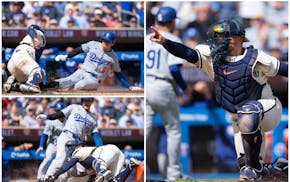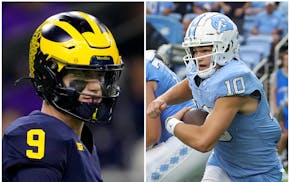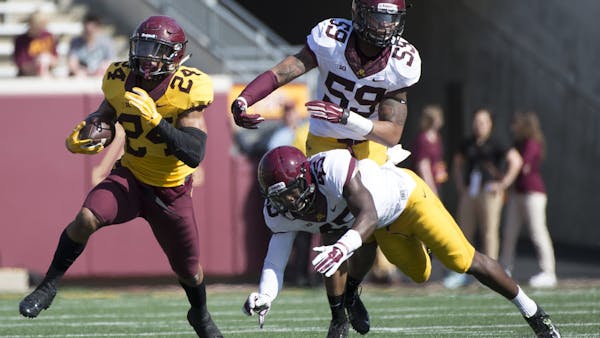Jerry Kill lounged in a lawn chair, staring at the ocean in the Caribbean. He was joined by his wife, Rebecca, and Duke football coach David Cutcliffe and his wife.
As they basked in serenity, the men talked football strategy and the benefits of no-huddle offense.
Hey, they're coaches. This is how they relax.
"There's no cellphones, you can just be who you are, a coach," Kill said of the Nike-sponsored trip he took this winter along with other college coaches.
The vacation allowed Kill to recharge after the season and also served as a fact-finding excursion for an idea that had been percolating in Kill's mind.
Kill has built programs on old-school toughness of power football. He loves to cram the ball down the defense's windpipe with a ball control ground game. That philosophy has served him well. But at age 53, he's not too old, or too stubborn, to embrace new ideas.
Kill recognized that his offense, while largely effective, also can become largely predictable and one-dimensional.
Huddle, run, huddle, run, huddle, run, huddle …
"You've got to be able to stay on top of things," he said.
In other words, stay fresh. Adapt, be flexible.
That's why Kill added a no-huddle component to his offensive playbook this spring. Kill downplayed the notion that no-huddle represents a radical departure in thinking, but his openness to it is interesting because that's never been a regular feature in his long coaching career.
Whether the Gophers employ no-huddle a little or a lot this season depends on everyone's comfort level in practice. The fact that Kill has embraced the idea shows smart coaching and an understanding that his program still needs to grow and evolve after reaching a New Year's Day bowl game last season.
The Gophers need more production from quarterback Mitch Leidner and their passing game, and this might help spark it.
"If we want to win two or three more ballgames," Kill said, "this is the next step."
Kill clarified a few things about his vision of the no-huddle during a 30-minute conversation this week:
First and foremost, he insists he's not changing the offense's identity as a power running team.
"No, no, no, we won't do that," Kill said.
The Gophers also won't necessarily play at warp speed when they use no-huddle. They're not trying to emulate Oregon and some of the other jet stream offenses.
The Gophers practiced no-huddle at different speeds. Sometimes fast, and sometimes they milk the entire play clock.
Kill discussed no-huddle concepts with a number of coaches during his trip, including Baylor's Art Briles, Mississippi's Hugh Freeze, TCU's Gary Patterson and Oregon's Mark Helfrich.
Kill then consulted with his coaching staff, particularly defensive coordinator Tracy Claeys, who knows better than anyone the effect no-huddle has on his own defense.
Kill believes a no-huddle operated at different speeds will make his offense more difficult to defend and give his coaching staff greater flexibility to change plays at the sideline with hand signals.
"What you're trying to do is make the defense have to think quick," he said.
The goal is two-pronged, though. The Gophers need to become more balanced and make their passing game more of a threat. They finished 121st national in passing yards (141.8 yards) per game last season. They also finished 121st in pass attempts (19.5).
That's not a model formula for a team that wants to keep ascending.
Their methodical approach, combined with Leidner's inconsistency, put them in a tough spot if they fell behind early, or if they needed a hurry-up offense at the end of a half.
If they got the ball deep in their territory with little time on the clock, the distance to the end zone looked wider than the Grand Canyon because they weren't built or equipped to operate fast.
"This allows you, if you get behind, you can catch up," Kill said.
Spring practice produced mixed results. Some days the no-huddle clicked. Some days were a mess. Kill expected that.
"We don't want to get it complicated for us," he said.
Maybe the no-huddle becomes just a change of pace, something they use occasionally. Or maybe it will be a big part of their offense. However it unfolds, Kill is wise to give it a shot.
"We're not losing our identity," he said. "We are who we are. However, if we can incorporate this and change the face of the game and not make it complicated for the kids, that would be something."
Chip Scoggins
Scoggins: Why 'championship or bust' fits these Wolves

Scoggins: Anatomy of a game-saving play as Correa throws out Ohtani

Scoggins: McCarthy or Maye? Ex-U coach breaks down Vikings' options
Scoggins: Cory Provus getting ready for 'biggest challenge' of career


